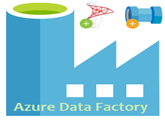Improving Data Quality
Poor data quality is one of the most challenging hurdles for successful data analytics. The story typically goes like this. The client has a flexible line of business system that people tend to use and abuse, such as entering garbage in free-form text fields that shouldn’t be free-form to start with. There is no data stewardship or data entry oversight. I’m not blaming anyone because people go about their business trying to get something done as fast as possible and BI is not on their minds. The issue is further complicated by acquisitions that usually bring more systems and more garbage. You and I’ve been there…the bigger and more complex the organization, the bigger the mess.
How do we solve this challenge? Should we buy a super-duper master data management (MDM) system to solve the data quality mess? Or should we kick the can down the road and tackle data quality in downstream systems, such as the data warehouse? In some cases, MDM can help but based on my experience, MDM systems are usually unnecessary. First, solving data quality issues down the road is probably a bad idea. Second, MDM systems bring additional complexity. ETL needs to be implemented to bring the data in and out, a business user must be delegated to correct data issues, another system needs to be learned and maintained, not to mentioned licensing costs. Instead, what’s really needed is to address data quality as upstream as possible, and that is the main data sources, such as the ERP system. The process is simple but tedious. Here are a few steps to get your team started on that road:
- Start by cleaning up the hierarchies because they are fundamental for top-level analysis. Request Management to come up with a standardized nomenclature in the form of hierarchies. What do we want our product hierarchy (Product Category, Subcategory,…) to look like? What do we want the Customer hierarchy to look like? Geography? Organization?
- Identify major data quality issues that deviate from the standard nomenclature.
- For each issue, determine how to address the issue. Can it be fixed by overwriting the data entry or coming up with a new custom field? Can the changes be automated or done in bulk, such as updating the underlying table directly? For example, if the country is misspelled, the best solution will be to go that invoice or customer and change the country. Or, if a certain hierarchy member is completely missing, such as continent or territory, add a new custom field.
- Assign the list of the data entry issues identified in step 2 to a data entry person to fix. Or, if they can be fixed in bulk, such as by updating the underlying tables, ask your helpful DBA to make the changes.
- If possible, ask the developer in charge to modify the source system to improve data quality, such as by using dropdowns instead of free-form entries for important fields and adding data entry rules.
I know this might be too simplistic. For example, the ERP might disable data entries once an invoice is approved, and I’ve seen clients adding data correction tables in data marts to get around this. If updating the data directly in the underlying tables is an option, this might be your best bet. However, if compliance or other regulations prevent this from happening, then the data must be fixed outside.
However, the main principle remains that data quality must be tackled as close to the source as possible. And improving data quality is your best investment and prerequisite to enable effective data analytics.








